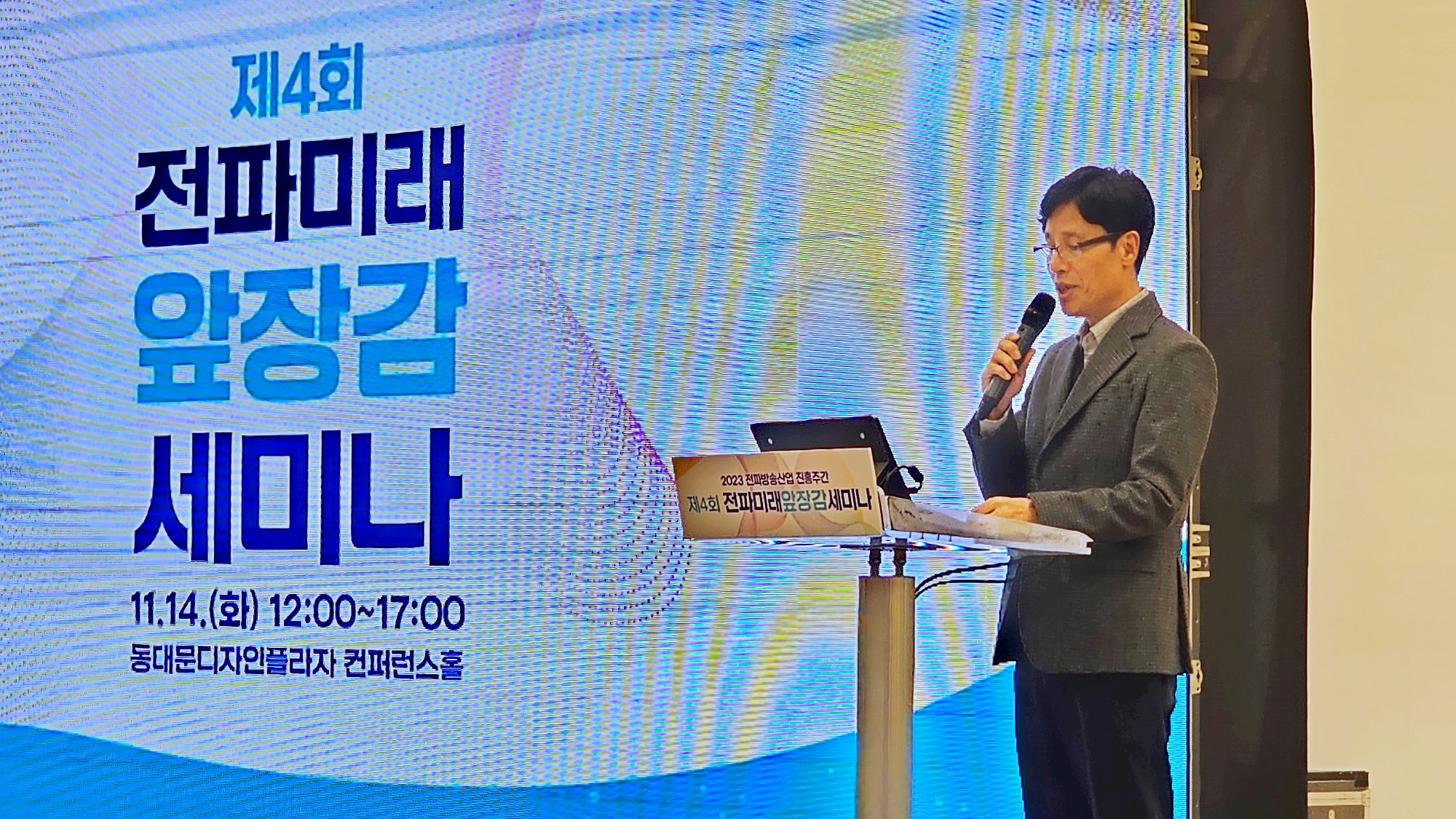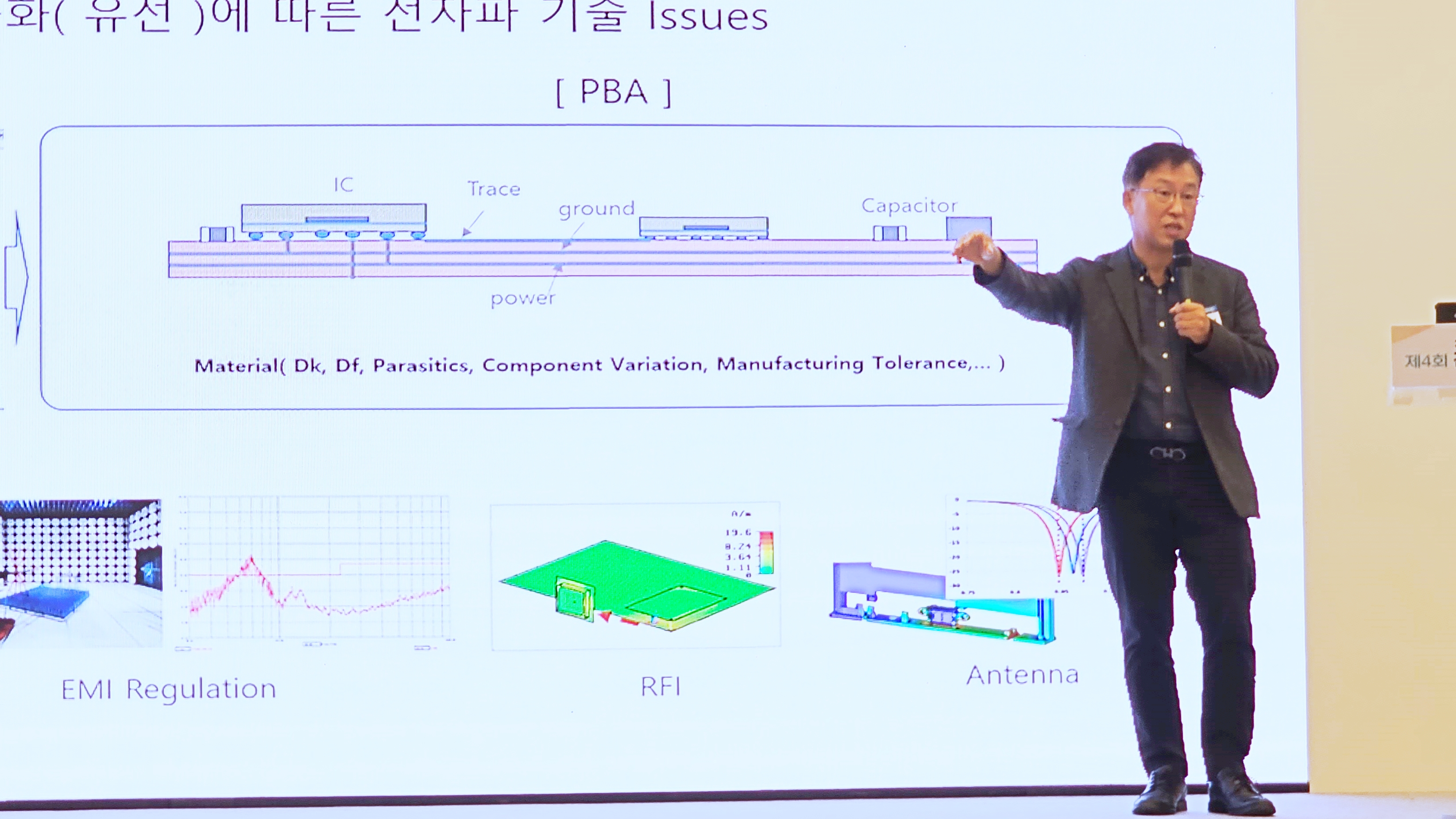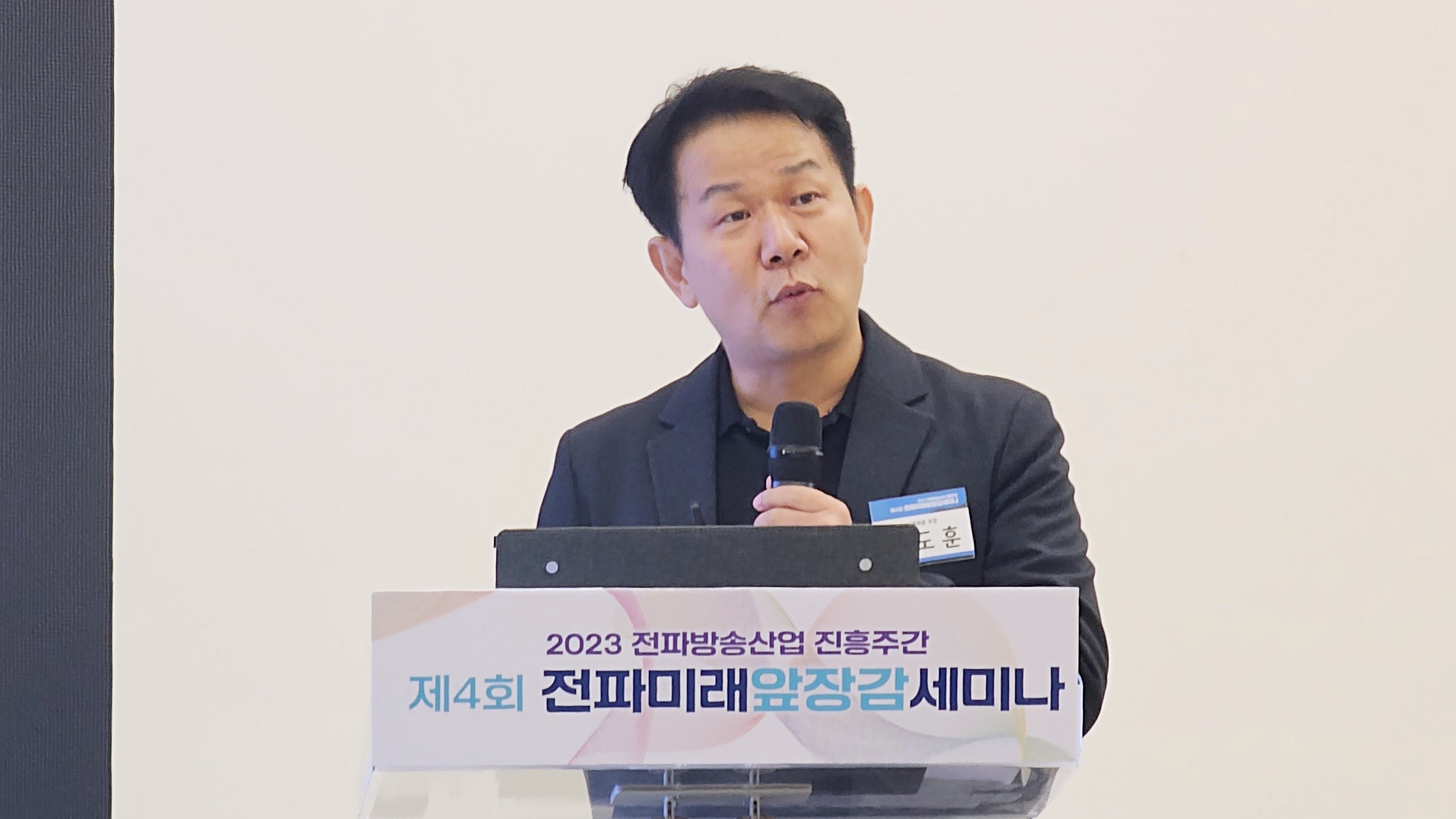전파융합 신기술의 등장이 점차 가속화되고 트렌드 교체주기가 빨라지면서 전파분야 인력들의 역량 강화 고민이 깊어지고 있다. 이에 전파방송통신교육원이 전파융합 교육에 앞장서고 있는 가운데, 생성형 AI 기술이 가져올 전자파 설계·분석방법의 변화상이 제시되며 주목을 끌었다.

▲제4회 전파미래앞장감세미나에서 김구년 전파방송통신교육원 원장이 개회사를 하고 있는 모습
챗GPT, 전자파 설계·분석 활용 가능성 高
통신 기반 빅데이터 多, AI시대 활용 적기
AI·전파융합 가속화, 개발 변화상 대응 必
전파융합 신기술의 등장이 점차 가속화되고 트렌드 교체주기가 빨라지면서 전파분야 인력들의 역량 강화 고민이 깊어지고 있다. 이에 전파방송통신교육원이 전파융합 교육에 앞장서고 있는 가운데, 생성형 AI 기술이 가져올 전자파 설계·분석방법의 변화상이 제시되며 주목을 끌었다.
14일 서울 DDP에서 한국전파진흥협회(RAPA) 전파방송통신교육원에서 주관한 제4회 전파미래앞장감세미나가 개최했다.
전파 관련 구직자 및 재직자들을 위한 최신 전파융합 산업 현황과 취업에 필요한 역량 정보 제공을 위해 마련된 이번 세미나는 △SK텔레콤 △오토노머스에이투지 △삼성전자 △텔릿 등이 참여해 발표했다.
온·오프라인으로 진행된 이번 행사는 140여 명의 참여 등록을 기록하며 다양한 전파융합 분야의 취준생 및 재직자들이 한자리에 모여 산업 전망과 분야 별 역량에 대한 인사이트를 나눴다.
김구년 RAPA 전파방송통신교육원 원장은 개회사에서 “이번 세미나는 전파산업 분야의 지속 발전에 필요한 재직자들을 위해 마련된 자리로 지속가능한 교육환경 마련에 노력하겠다”며 “전파이용 발전을 촉진하고 전파융합 분야에서 재직자 간 화합의 장이 되길 바란다”고 말했다.
■ 박학병 수석, “챗GPT 전자파 설계·분석서 자리잡을 것”

▲박학병 삼성전자 수석
생성형 AI의 등장이 다른 산업 영역에서의 융복합 시너지를 낼 것으로 기대되고 있는 반면, 아직까지는 실사용에 있어서 활용법이 알려진 바는 많지 않다. 특히 전파 분야 개발자 및 엔지니어들에게는 전파와 챗GPT의 연계를 상상하기 어려웠다.
그러한 가운데 박학병 삼성전자 수석은 올해 초부터 생성 AI를 이용한 전자파 분석과 설계에 대해 사례 연구를 수행했고 이것을 이번 세미나에서 발표했다.
과거엔 PCB를 디자인하고 제작하는 과정에서 성능 확보에 EMI가 큰 문제가 되지 않았지만 오늘날의 EMI/EMC는 높아지는 주파수와 빨라지는 신호속도 등의 특성 추세에 따라 EMI 대책 설계 복잡성이 증가하고 있는 상황이다.
과거의 전자파 설계와 분석은 재설계 및 저항 부품 사용 등으로 대응해 시간과 비용 소모가 과다했으며, 현재는 시뮬레이션과 디자인 룰 체크 활용으로 제품 개발에서 시간과 비용 소모를 줄였지만 이는 역량과 경험있는 전문가가 필요하고, 가이드와 교육이 필요해 필연적으로 많은 교육시간이 요구된다는 어려움이 있었다.
박 수석은 향후 생성 AI 활용 시 디자인 가이드와 시뮬레이션에서 LLM 서비스를 이용하는 방법과 인하우스 모델을 활용해 시간과 비용을 현재 방법 대비 획기적으로 줄일 수 있으며, “매틀랩, 파이썬, API 등을 잘 알고 있는 전문가가 가능했지만, 이제는 일반 개발자들도 생성 AI를 이용해 자연어로 시뮬레이션과 모델링이 가능할 것이며 내년정도면 결과물들이 조금씩 나올 것”으로 전망해 향후 전자파 설계 및 분석에서의 생성형 AI 위상 변화가 기대되고 있다.
AI나 코딩을 모르는 EMI 전문가더라도 챗GPT 및 GPT 빌더를 이용해 △테스크 정의 △학습데이터 준비 △파인 튜닝의 과정을 거쳐 분석값과 모델링을 도출하는 과정을 박 수석은 세미나 중 설명했다.
박 수석은 향후 “전자파 설계 및 분석에서 생성 AI가 자리잡게 될 것이다”라고 전망하며 “이 기술이 가져올 변화와 변화상 속에서 미래 엔지니어들의 역량에 대해서 생각해볼 필요가 있다”라고 조언했다.
■ “AI 시대, 기회의 재료는 ‘빅데이터’다”

▲
하도훈 SK텔레콤 부장
SK텔레콤 하도훈 부장은 자사의 지오비전 퍼즐을 소개하며, “생성 AI 시대 기회의 재료는 빅데이터”라고 강조했다.
휴대폰 등 이동통신기기로부터 오는 정보의 양과 가치는 무한하며 기지국 데이터를 통해 생성되는 빅데이터는 무한한 활용 가능성과 잠재력이 있을 것으로 기대되고 있다. 전파 기반 빅데이터는 유동인구 및 인구밀집에 대한 실시간 및 시간대별, 기간별 정보를 나타낼 뿐 아니라 성별, 소비패턴, 생활권과 라이프 스타일 등 다양한 지리 기반 데이터 해석이 가능하다.
이를 비즈니스에서 활용할 수 있는 가능성이 열리고 있고 있는 가운데 하 부장은 “지오비전 퍼즐로 인구 거주, 이동, 체류를 파악해 장소혼잡도와 유동인구 정보를 바탕으로 킥보드 공유 플랫폼사는 킥보드 재배치 등에 활용한다”며 “지하철 출구별 인구이동 정보와 특성을 파악해 옥외광고 및 상권 분석 타케팅이 가능하다”며 비즈니스 활용 예시를 설명하기도 했다.
현재 지리정보 빅테이터는 지자체 정책 수립 등 공공분야에서 전체의 70% 수요를 보이고 있다고 전해지며, 지역 내 버스 노선 조정, 저상버스 우선 제공, 국가별 관광객 동선 파악 등에 활용되고 있는 상황이다.
하 부장은 “통신 기반 빅데이터는 하루에만 28페타바이트(2만8,000천테라바이트)가 생성되는데 이를 저장하고 활용하는 것이 필요하다”며 “남들보다 한 발 빨리 활용 아이디어를 낸다면 누구나 스타트업 CEO가 될 수 있다”고 덧붙였다.


